

Deep Dive on Diego's Care
Remembering Diego
Utah’s Hogle Zoo is deeply saddened to share the loss of male California sea lion, Diego. Over the past year, Diego’s animal care and veterinary teams worked closely to provide ongoing treatments for his degenerative disc disease, including laser therapy, medications, training adjustments, and habitat evaluations to ensure mobility and comfort.
On October 22, 2025, the animal care and veterinary teams made the difficult decision to say goodbye to Diego through humane euthanasia. He was surrounded by his keepers and hospital staff who cared for him deeply and worked tirelessly to ensure he received the best possible care throughout his life. Read more about Diego’s care below.
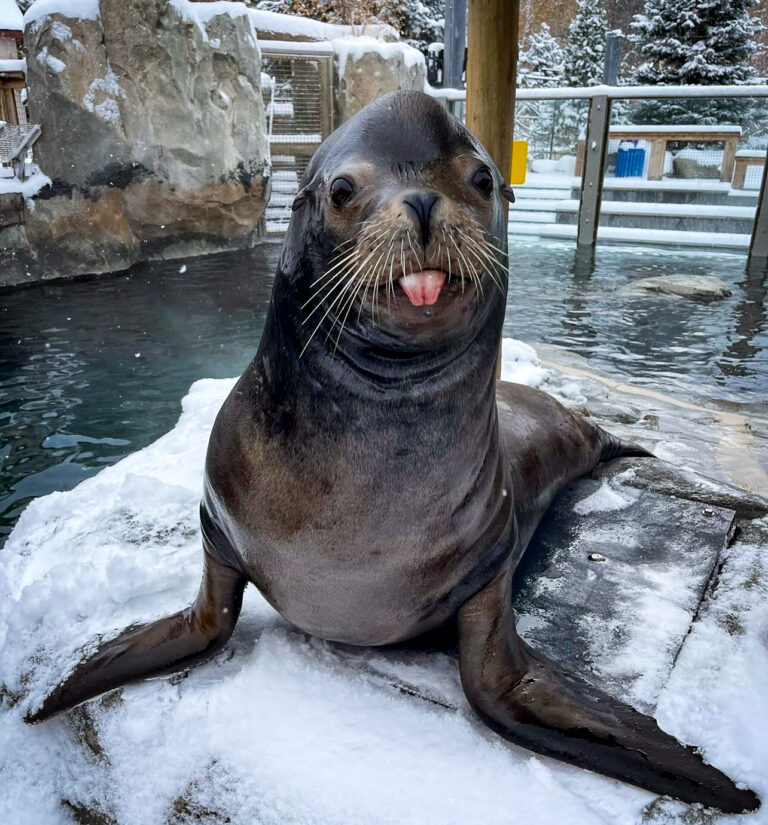
September 2025: Checking in on Diego
In 2024, California sea lion Diego was diagnosed with degenerative disc disease, a spinal condition that affects his mobility. The changes in his spine have caused weakness in his front flippers and a loss of mobility in his rear flippers.
To support Diego, his care team provides specialized treatment tailored to his needs, like medication, specialized training, and therapies designed to support his comfort. One of those is laser therapy, which stimulates blood flow and helps reduce inflammation. Through voluntary training, Diego is able to be an active participant in treatments like this. Guests may notice Diego receiving care and treatment during zoo visits. Every step of Diego’s care is focused on giving him the best quality of life.
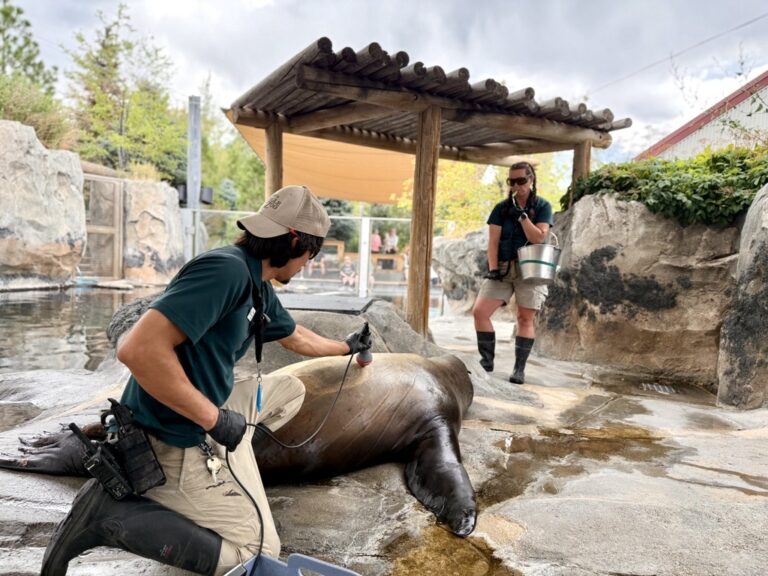
How Utah’s Hogle Zoo and its health partners came together in a milestone for zoo medicine.
Nothing bids a warmer welcome to Rocky Shores than the iconic barks of California sea lions Maverick, Finn, and Diego. For eight years, Diego has been a charismatic and beloved presence at Hogle Zoo, captivating guests with his playful personality. In fall 2024, Diego faced an unexpected health challenge that would call on every resource and ounce of expertise from his dedicated care team and the zoo’s community partners.
Rut season
Each breeding season between May and August, male sea lions experience rut—a period of heightened hormonal activity marked by vocalizations, displays of dominance, and territorial behaviors. Shortly after rut season ended in September, Diego’s care team observed changes in his behavior. Diego, typically lively and robust, became less mobile, vocalized more than usual, and showed a decreased appetite. These concerning signs prompted swift action from the zoo’s animal care and health teams.
Collaboration of care
Determined to help Diego, Hogle Zoo enlisted renowned pinniped anesthesia expert Dr. James Bailey to lead a lengthy anesthetic procedure so we could run diagnostic testing. On October 5, 2024, the team came together in a monumental effort to provide the best possible care. With the help of keepers, veterinarians, and health partners from University of Utah Health, Diego underwent an extended anesthetic procedure in the sea lions’ indoor habitat.
The initial results provided some relief to the team – Diego’s bloodwork and abdominal ultrasound came back normal, ruling out several potential concerns. However, they also left unanswered questions about the cause of Diego’s symptoms.
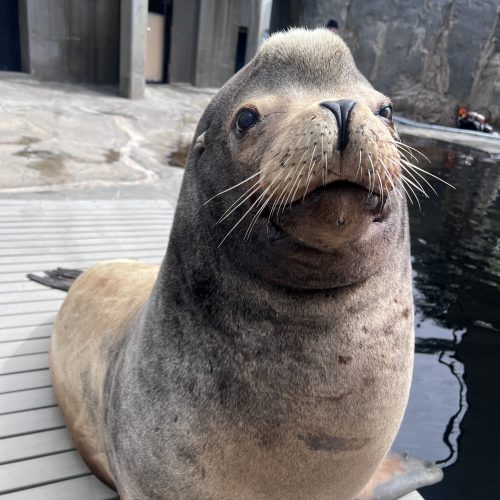
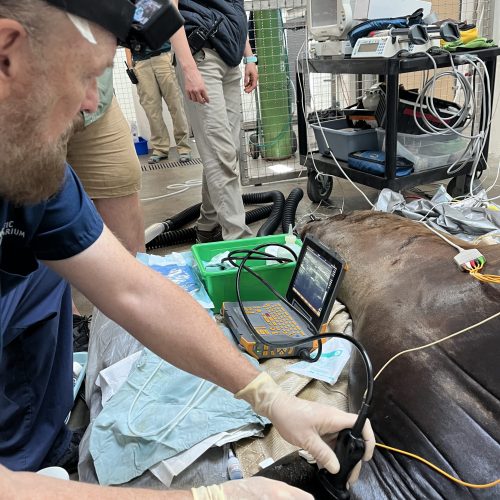
- Rocky Shores Senior Keeper, Kimmy McIntyre.
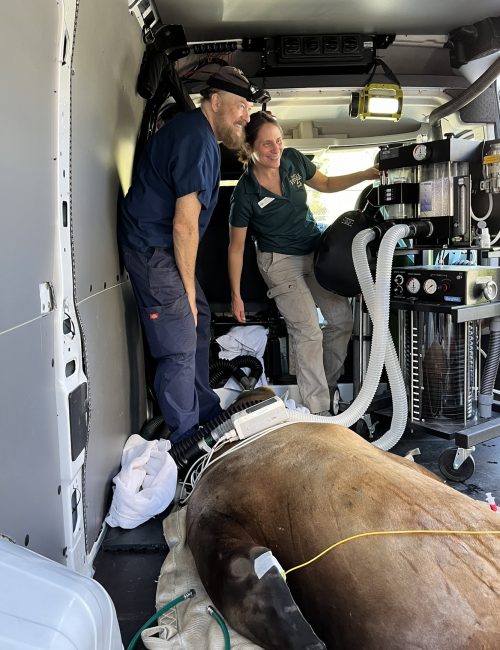
The team’s unwavering commitment and determination led to a rare and complex undertaking—getting a 650-pound sea lion to a CT scanner. With his care team by his side, Diego was carefully moved to the U of U Health radiology department. Under anesthesia, Diego’s vital functions were manually supported by his team, who delivered breaths through a large oxygen tank during the transfer.
-Dr. Erika Crook, DVM, Dipl. ACZM, Board Certified Specialist in Zoological Medicine™ and Director of Animal Health for Hogle Zoo.
Edward Quigley, MD, PhD, professor of radiology at U of U Health, led a CT scan of the sea lion’s entire body to diagnose him. “It was logistically pretty amazing,” Quigley said. “Diego was longer than the standard CT scanner table, so we had to be creative to support his hindquarters while imaging.” He adds that the radiology department often lends its expertise and advanced scanning equipment to help Hogle Zoo with complex imaging or critical cases.
Diagnosing Diego
Through the CT scan, Diego was diagnosed with severe degenerative disc disease, a spine condition that involves narrowing of vertebral disc spaces, narrowing of the spinal canal, and bulging discs. These findings explained Diego’s flipper weakness—chronic in his front flippers and progressively worsening in his rear flippers.
Road to recovery
Waking up after arriving back at Hogle Zoo, Diego began his recovery journey, closely monitored by the animal care and veterinary teams through the night. In the days following his procedure, Diego’s appetite returned, allowing him to eat enough fish to take his twice-daily steroid anti-inflammatory medication, similar to aspirin, to treat his back discomfort. He began regaining strength and mobility, even enjoying a brief swim.
Despite advanced spinal disease, Diego is stable and continues to participate in his care. Animal care and veterinary teams provide daily medication, assess for signs of relapse, and evaluate his habitat to ensure mobility and comfort.
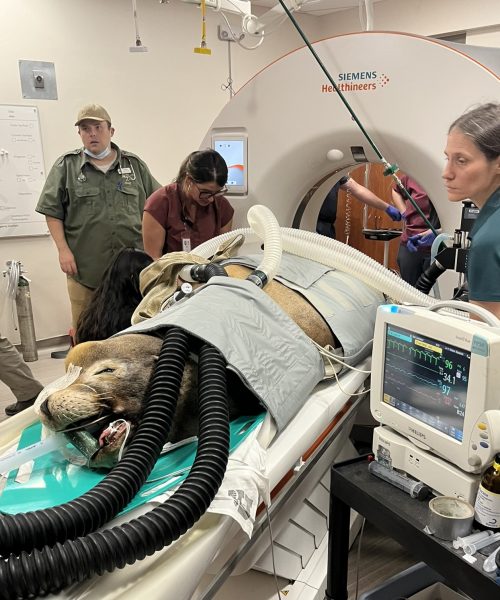
Diego’s team modified his routine to support his wellbeing, including training adjustments to protect his spine and training for laser therapy, a non-invasive treatment to stimulate blood flow and reduce inflammation. While Diego’s overall range of motion has improved, his rear flipper movement is limited.
We’ve started monitoring superficial wounds on Diego’s body and believe these are due to his spinal disease and how he moves and rests in his habitat. While living in an aquatic environment limits treatments, Diego’s team is committed to finding creative ways to heal the wounds with oral and topical medicine, providing the best possible care as his needs evolve.
-Dr. Erika Crook
You can visit Diego and his habitat-mates Maverick, Finn, Mira, and Nika in Rocky Shores.

